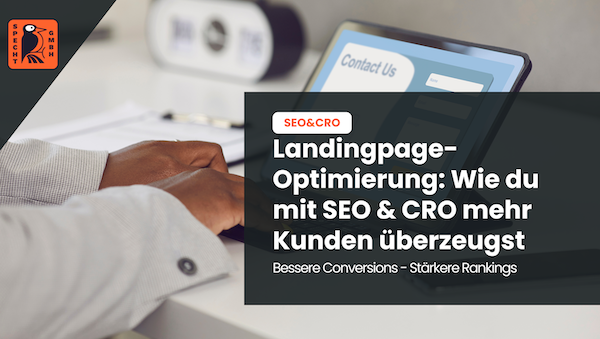In a nutshell: What is a target group?
The target group - also known as the target audience - describes a group of people to whom companies direct their marketing activities. You can determine your target audience using various methods and should analyze it intensively in order to make your marketing more targeted and successful . There are various methods for this.
Definition of target group - what does this mean?
A target group is a group of people that companies or advertisers want to reach with their marketing or who are supposed to buy products and services. It can therefore be said that the target group always consists of potential customers.
A target group is not limited in size. However, they all have certain things in common and therefore form a homogeneous group. This is the only way for companies to reach them with targeted marketing measures.
As a target group is part of all active consumers, they react homogeneously to certain influences - such as advertising. Defining the target group is therefore extremely important in order to address precisely those people with advertising measures that are worthwhile.
The relevance of the target group
There are many reasons why companies should not refrain from clearly defining their target group. Effective marketing is only possible if you know who you want to address. This applies to both online and offline marketing strategies.
If you know your target group and align your marketing measures accordingly, you can achieve a higher conversion rate, among other things. After all, only those users who are highly likely to make a purchase are addressed.
In addition, the advertising budget is used more effectively. Advertising is not played out to people who are not interested in a company's products and services anyway. Scatter loss can be reduced by defining the target group.
Another positive effect: users and customers are less annoyed when they see an advertisement for a product because it is something that is relevant to them. This improves the positive perception of your brand.
-
Free
SEO strategy meeting
In a free SEO strategy talk, we uncover untapped potential and develop a strategy to help you become more successful on Google.

- More organic visibility
- More organic visitors to your website
- More inquiries & sales
How do I define my target group?
If you want to use your marketing budget in a targeted and efficient way, you should clearly define your target group. This is where target group analysis comes into play. Target group segmentation makes sense. There are various characteristics that you can use to define your target group:
- socio-demographic characteristics
- psychographic characteristics
- Purchasing behavior and consumer behavior
- Characteristics of media use
Socio-demographic characteristics
These include demographic characteristics such as age, gender and marital status. Such characteristics are often easy to determine, as a person's name can already tell you a lot.
Furthermore, socio-economic characteristics are also relevant, which are somewhat more difficult to find out. These include occupation, level of education and income. Many people use social networks such as Facebook to get a comprehensive overview, as this is precisely the kind of data that is often provided.
Psychographic characteristics
These characteristics are about finding out the motivation of your target group as well as their values and wishes. This will tell you a lot about the interests of the group of people and the background to their actions. This helps you to decide what content you want to reach them with.
Purchasing and consumer behavior
What does the purchasing behavior of your target group look like? Are they first-time buyers, existing customers or intensive users? This can tell you a lot about how people react to price changes, for example.
Characteristics of media use
These characteristics are quite easy to determine. You simply determine which media your target group prefers to use. It is also about how and when the media is consumed so that you can display your advertising at the perfect time .
Definition of the target group using personas
With all these characteristics, the more accurate your data is, the more precisely you can define your target group. And the more targeted your advertising measures can be.
Once you have defined your target groups, you should record them in several personas - also known as proto-personas or buyer personas. These are fictitious people who combine all the characteristics of your target group. In this way, you create a characterization of your dream customer.
Creating such personas helps to ensure that you have a specific person in mind and that the focus of your advertising is not too abstract. It therefore helps you to create suitable advertising messages.
A persona becomes particularly useful and "alive" when you ask the fictitious person the following questions:
- What are the person's goals?
- What is important to her?
- What problems does she have?
- What wishes does she have?
- What needs does the person have?
- How does it benefit?
- What is the person's environment and everyday life like?
- I am one of the leading SEO experts in Germany
I am known from big media such as Stern, GoDaddy, Onpulson & breakfast television and have already worked with over 100+ well-known clients successful on Google.
Google rating
Based on 185 reviews
Trustpilot rating
Based on 100 reviews
B2B vs. B2C target groups
In marketing, a clear distinction is made between two types of target groups:
- B2B (Business-to-Business): Business customers
- B2C (Business-to-Consumer): Private customers
B2B target groups include companies, self-employed people, organizations and professionals who are interested in your product or service for business purposes. The decision-making process is often quite complex and based on facts and figures.
For example, ROI, technical specification and long-term business relationships all play a role. As a rule, several people are involved in the decision for or against a purchase.
B2C target groups, on the other hand, buy for personal use. Emotions often play a major role. Purchases are also influenced by price, brand perception and trends.
For you, this means that your marketing will look different depending on whether you are targeting a B2B or B2C audience:
- B2B: Building relationships, providing detailed information, offering customized solutions
- B2C: brand awareness, customer experience, broad appeal
B2B target groups are therefore much smaller than B2C target groups. They are defined on the basis of industry affiliation, company size, company phase and region. In contrast, consumer behavior, budget and preferences are more relevant for the definition of B2C target groups.
What methods are available for target group analysis?
The terms target group definition and target group analysis can be clearly distinguished from one another. The first step is to define the target group, which describes which groups of people you want to address. This is followed by a definition and segmentation of the target group based on the aforementioned characteristics.
Only after this process does the target group analysis follow. This is much more detailed and focuses on the needs of your potential customers. In the course of the analysis, all the data collected is evaluated using various measures. A meaningful persona can then be created.
There are various methods for target group analysis.
Surveys
They are ideal for collecting a lot of information with very little effort. There are many tools for target group analysis that you can use to digitally create your own surveys and make them available to your target group.
One major advantage of surveys is that they can be conducted anonymously. In the experience of many experts, this makes the answers more honest and therefore more meaningful. This reduces various inhibitions.
But you yourself can also help to ensure that you receive high-quality information: Formulate your questions as specifically and clearly as possible. Make sure that people can answer them easily.
By asking imprecise or overly complex questions, you will only end up with unspecific answers. This makes the evaluation more difficult and a large amount of data even unusable.
It also makes sense to interview a large number of people. This reduces the margin of error.
Interviews
Interviews are a time-consuming but valuable method. These are targeted, personal surveys. They are characterized by the fact that they deliver very high-quality results. Although anonymity is not guaranteed as with surveys, you can go into more depth and find out what really concerns your target group.
The group of people surveyed is usually smaller than in surveys, which can reduce representativeness. You should always keep this in mind.
Online research
The World Wide Web makes it possible to simply research online to find out more about the target group. This method of target group analysis is inexpensive and quick. However, the potential for errors is higher. After all, not everything you find on the Internet has to be correct. You should therefore consider online research as a supplement to the methods mentioned above.
Above all, refer to trustworthy sources. If you want to analyze the target group of your own website, the Google Analytics tool can also help. This will provide you with information on the gender, age and origin of your visitors.
Conclusion: What is a target group?
A target audience is the group of people that a company wants to address with its own marketing measures. The target audience can also be described as a group of potential customers.
Only through the process of target group identification and all the associated steps can you design your marketing efficiently and in a targeted manner. You will enjoy benefits such as better conversion rates, lower wastage and more efficient use of your budget.
- Do you know my SEO newsletter?
Register now and receive regular tips from the experts.






